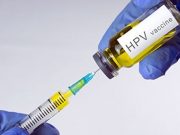Tag: Human Papillomavirus (HPV)
HPV Vaccination Rates Suboptimal Within Ages 9 to 12 Years
For most of the study period, higher rates of HPV vaccination initiation and up-to-date rates were seen for non-Hispanic Blacks, Hispanics
Oral HPV Infection Detected in Infants, Young Children
Persistent, oral, high-risk HPV infection for children linked to oral HPV carriage of mother at birth, seroconversion of mother to high-risk HPV
Parental HPV Vaccine Hesitancy Increased During 2012 to 2018
However, more unvaccinated teens receiving provider recommendation for HPV vaccination; findings consistent for boys and girls
Cervical Cancer Screening Rates Dropped During Stay-at-Home Order
Cervical cytology screening rates per 100 person-months decreased 78 percent among women aged 21 to 29 years
Timing, Intensity of Oral Sex Are Risk Factors for HPV-OPC
Increased odds of human papillomavirus oropharyngeal cancer seen for younger age at first oral sex, oral sex intensity
Interventions to Increase HPV Vaccine Coverage Cost-Effective
Interventions could avert 3,000 to 14,000 future HPV cancers scaling to the U.S. population
HPV Vaccine Generally Well Tolerated in Males
Disproportionate reports found for some adverse events, including syncope, with reporting odds ratio of 2.85














